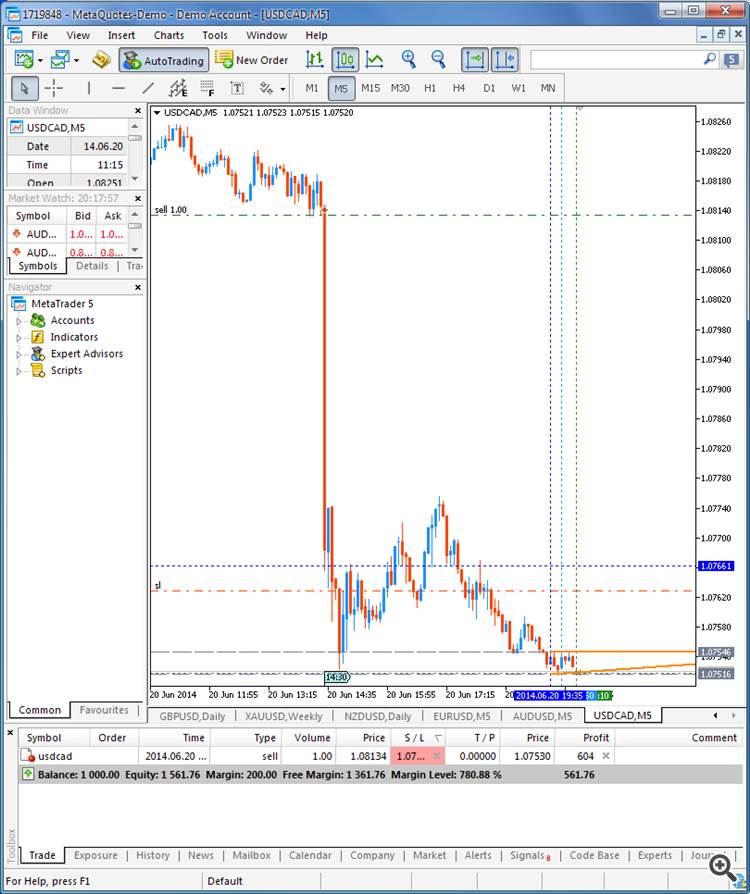The Canadian dollar rose to almost six-month highs against the U.S. dollar on Friday, after a strong inflation report the previous Friday eased concerns over the subdued inflation outlook.
USD/CAD was down 0.24% to 1.0662 late Friday, the lowest level since January 7. For the week, the pair tumbled 0.85%.
The pair is likely to find support at 1.0600 and resistance at 1.0695, Friday’s high.
Demand for the Canadian dollar continued to be underpinned after stronger-than-expected inflation data earlier this month raised expectations that the Bank of Canada could shift away from its neutral stance on monetary policy.
In the U.S., a report on Friday showed that consumer sentiment was revised higher this month, but the data did little to reassure investors after data earlier in the week showed that the economy contracted more sharply than initially estimated in the first quarter.
The final reading of the University of Michigan's consumer sentiment index rose to 82.5 this month from 81.9 in May, compared to expectations of 82.2.
The greenback remained under pressure after the Commerce Department reported Wednesday that the U.S. economy contracted at an annual rate of 2.9% in the first three months of the year, compared to the consensus forecast for a decline of 1.7%.
Another report on Thursday showed that U.S. consumer spending rose by just 0.2% in May, below forecasts for 0.4%.
Monday, June 30
USD/CAD was down 0.24% to 1.0662 late Friday, the lowest level since January 7. For the week, the pair tumbled 0.85%.
The pair is likely to find support at 1.0600 and resistance at 1.0695, Friday’s high.
Demand for the Canadian dollar continued to be underpinned after stronger-than-expected inflation data earlier this month raised expectations that the Bank of Canada could shift away from its neutral stance on monetary policy.
In the U.S., a report on Friday showed that consumer sentiment was revised higher this month, but the data did little to reassure investors after data earlier in the week showed that the economy contracted more sharply than initially estimated in the first quarter.
The final reading of the University of Michigan's consumer sentiment index rose to 82.5 this month from 81.9 in May, compared to expectations of 82.2.
The greenback remained under pressure after the Commerce Department reported Wednesday that the U.S. economy contracted at an annual rate of 2.9% in the first three months of the year, compared to the consensus forecast for a decline of 1.7%.
Another report on Thursday showed that U.S. consumer spending rose by just 0.2% in May, below forecasts for 0.4%.
In the week ahead, investors will be looking to the U.S. nonfarm payrolls report, due to be released one day early on Thursday for further indications on the strength of the labor market. Canada’s monthly GDP report on Monday will also be in focus.

Monday, June 30
- Canada is to publish the monthly report on gross domestic product, the broadest indicator of economic activity and the leading indicator of economic growth.
- The U.S. is to produce data on manufacturing activity in the Chicago region and a report on pending home sales.
- Markets in Canada will remain closed for the Canada Day holiday.
- The Institute of Supply Management is to publish a report on U.S. manufacturing activity.
- The U.S. is to release the ADP report on private sector job creation. The U.S. is also to release data on factory orders.
- Later Wednesday, Fed Chair Janet Yellen is to speak at an event in Washington; her comments will be closely watched.
- Both Canada and the U.S. are to publish data on their respective trade balances and the U.S. is also to publish the weekly report on initial jobless claims.
- In addition, the U.S. is to release what will be closely watched government data on nonfarm payrolls and the unemployment rate, one day ahead of schedule, before the fourth of July holiday.
- Later Thursday, the ISM is to publish a report on service sector activity.
- Markets in the U.S. are to remain closed for the Independence Day holiday.



